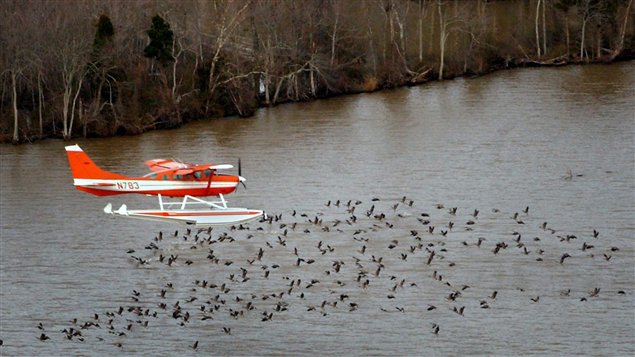In what’s considered to be the world’s largest wildlife survey, people are fanning out across huge swaths of North America to count different species of waterfowl and ponds. The surveys have been done every year since 1955 by the Canadian and U.S. wildlife services, state and provincial governments, aboriginal groups and special-interest organizations like Ducks Unlimited Canada.
Fixed wing airplanes and helicopters fly low in the same patterns every year starting in May and spotters call out the number and types of birds they see. They cover territory from the North-central United States, the Dakotas up through the Canadian prairie provinces, through the Northwest Territories and Yukon and even some parts of Alaska. Since 1990 the survey has been extended to include eastern Canada as well.
“It’s really remarkable,” said David Howerter, national manager of research with the Institute for Wetlands and Waterfowl Research for Ducks Unlimited Canada. He has flown with biologists doing the survey. “They fly quite low, about 150 feet off the ground and they’re travelling about 100 miles per hour so you can imagine the ponds come up quite quickly…Some ponds have 30 or 40 birds and they’re remarkably accurate in being able to identify the species and also to count the birds as they fly along.”
Others spotters work on the ground to report creatures that might be hidden by vegetation. The figures are collected and complex mathematical formulas are used to project the numbers in each population.

“We’re really fortunate to have this kind of data,” said Howerter. “We get to understand population trajectories, which populations are growing, which are in decline. We also use this information as the basis for a lot of the planning tools that we build to guide conservation programs.”
The numbers also help determine how much hunting should be allowed and give a more general indication of the state of the environment.
“Our ducks are a bit of a canary in the coal mine,” said Howerter. “We know that if their populations are declining then there’s something that we need to pay attention to.”
Last year a record 48.6 million waterfowl were counted and that was an increase of 7 per cent from the year before. Scientists think that is because there has been wet weather which creates more wetlands.







For reasons beyond our control, and for an undetermined period of time, our comment section is now closed. However, our social networks remain open to your contributions.